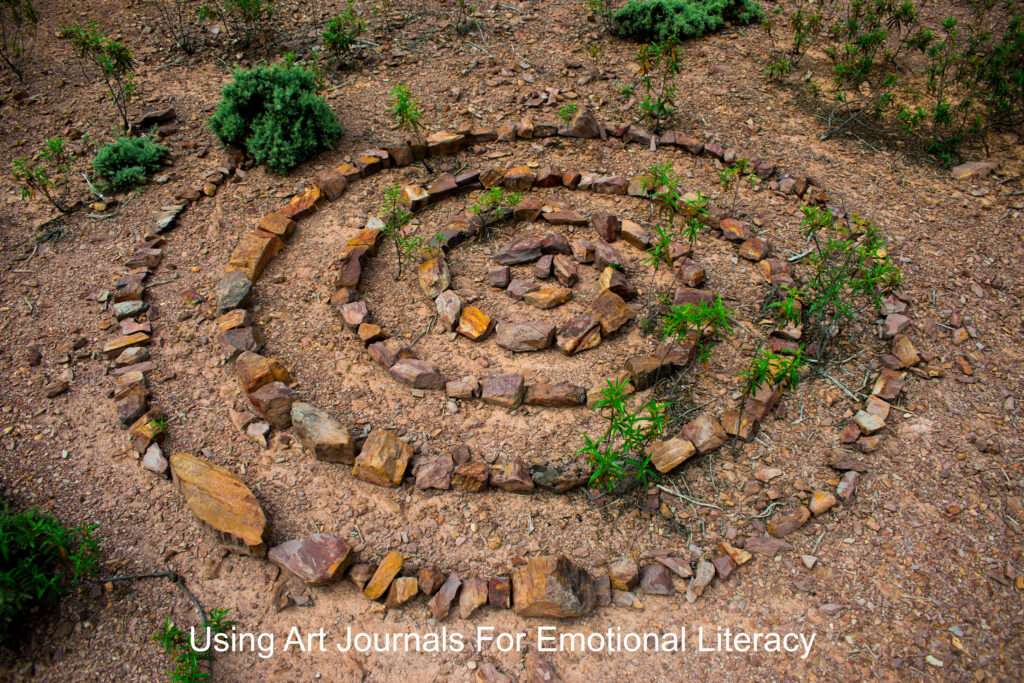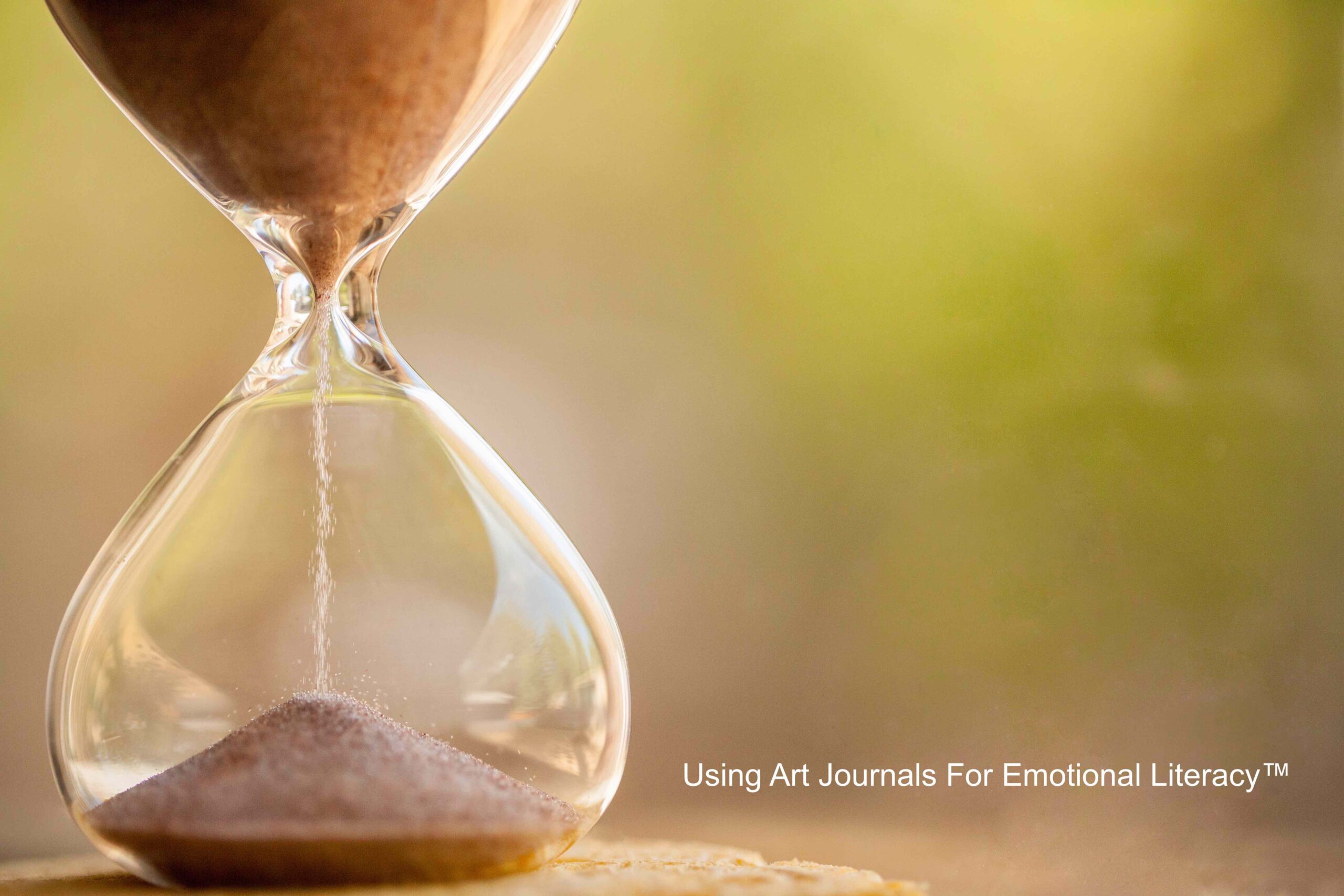At Using Art Journals for Emotional Literacy, we teach through the ‘emotional cycle.’ The cycle includes: Feelings, Calm, Joy, and Community. Helping your child or student find a place of calm is a crucial part of this cycle. Calm is the state of being where we are thinking rationally, our heart is beating regularly, and our demeanor is relaxed.
Teaching children the valuable life skill of getting to calm will help them maintain successful, positive relationships—at home, at school, and in their communities—throughout their entire life.
On the opposite side, the inability to find calm can have a lasting negative impact. Without this emotional literacy skill, they may grow into adults who have anger issues and lack empathy and meaningful relationships. And since community and relationships are some of the most important predictors of happiness and emotional wellbeing, this is a high price to pay for not learning how to find a place of calm.
How to Find Calm
There are four key steps to guiding your children and students to a place of calm.
Kids may need help identifying their emotions (or may not), but our most important role is to validate whatever they are feeling. At this point, other than allowing for time to feel the entire cycle of the emotion, our job is to just keep the child safe. Make sure that they are not hurting themselves or others—that’s it.

Step One: Allow your student to feel their emotions.
Kids may need help identifying their emotions (or may not), but our most important role is to validate whatever they are feeling. At this point, other than allowing for time to feel the entire cycle of the emotion, our job is to just keep the child safe. Make sure that they are not hurting themselves or others—that’s it.

Step Two: Connect with your student.
During the second stage, continue to allow your child to feel; if you haven’t done so already, connect with them and empathize with them. For example, you might want to say something like, “You worked so hard on building that sand castle and it got knocked down. I imagine that would feel very disappointing.” Or, “I get it. I’d be mad too if I worked for an hour writing that beautiful paper only to find a spelling mistake. I know you wanted it to be perfect.” The key here is to validate those emotions and make a genuine, true connection.
If your child is young and still learning how to identify their emotions, you might invite them to read a book about feelings or look at photos or ‘emotion cards’ to ask them how they think they might be feeling.
Step Three: Offer your student different coping strategies.
Give your students a couple of choices for coping, like a hug or energetic action like stomping your feet together. You can also ask them, “What do you want to do right now?” Remember, it’s okay if they are not ready to move on and begin coping; if they’re not yet at this stage, go back to step one and just let them feel right now. These steps don’t always happen one at a time, it’s often a process to get to calm.
Step Four: Think about problem solving.
It’s very important to make sure that your child has gained control and is in a calm state. They need to have processed the entire spectrum of their emotions, and sometimes this can take a full day. Begin by inviting your students to come together, and ask them, “We should talk a bit about what happened, do you have some thoughts about how you want to solve this?” Or, “You wanted to play with that and Sarah wouldn’t let you, what could we do or what could we have done?” Brainstorm with your children and come up with strategies for dealing with this if and when it happens again.
A Quick Tip
Remember our kids are always looking to us as a model! When you feel yourself getting worked up, you can follow the above steps too.

Learning More About Teaching Emotional Literacy | Curriculum
If you are interested in finding out more about the work that we are doing and joining us on our mission to teach students emotional literacy, sign up for our weekly newsletter. We offer quite a few opportunities to support you in this journey, including an engaging facebook group, free or low-cost webinars, and a stellar four-part masterclass followed by continued chats, resources, and tools that are part of our Using Art for Emotional Literacy membership.
Additional Resources
By Spramani Elaun & Kristen Richter
© 2020 All Rights Reserved

